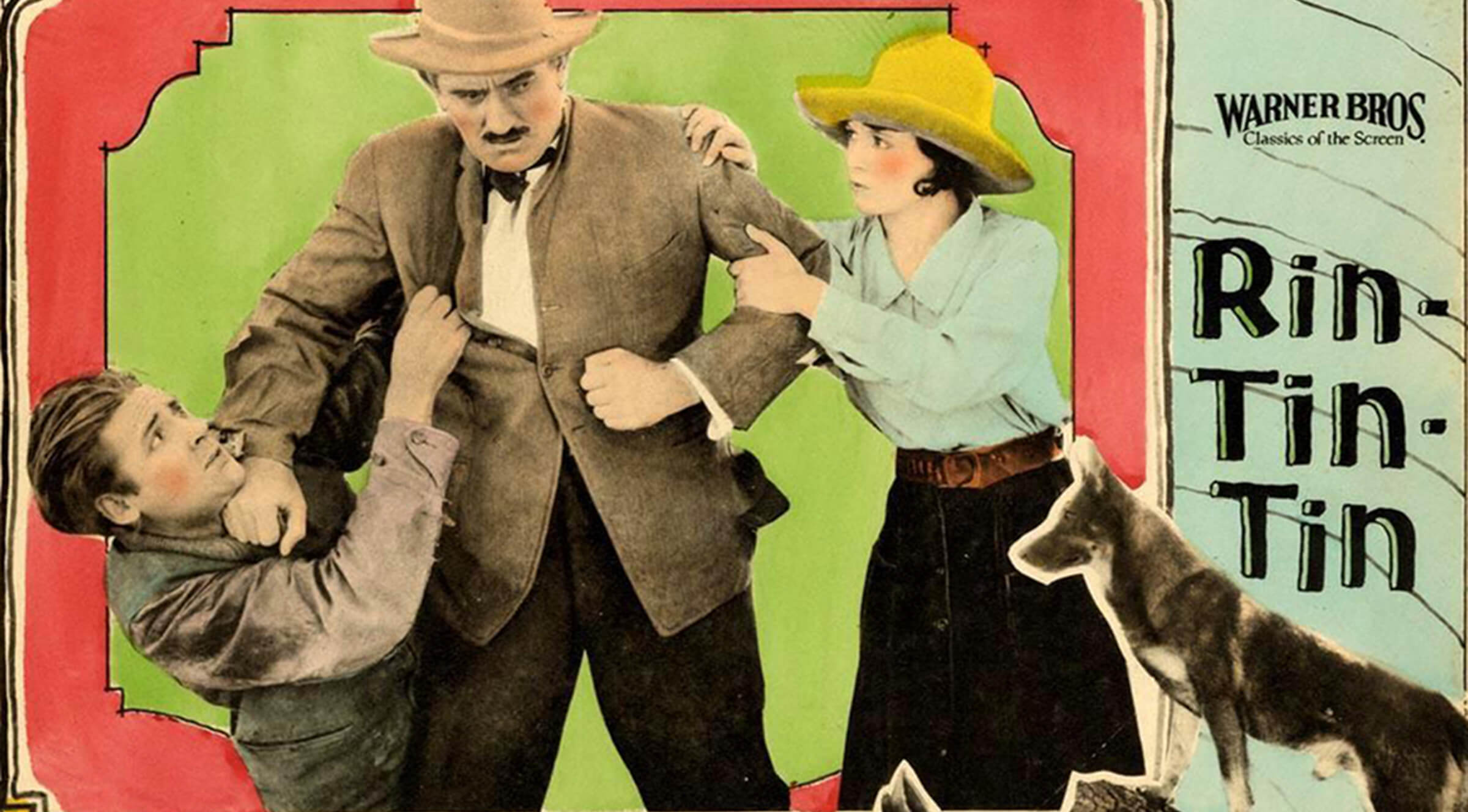Rin-Tin-Tin started his life in an unlikely and dangerous place: in the back of a bombed-out German bunker in September of 1918. His mother was a member of the German Dog Corps, which participated in the rescuing of injured soldiers. Rin-Tin-Tin would have starved along with his four litter mates if Corporal Lee Duncan of the 136th Aero Division hadn’t been on patrol that morning with his commanding officer. Rescuing the family from behind a collapsed wall, they each adopted two of the pups. Lee named his pair Rin-Tin-Tin and Nanette.
Many airmen in World War I wore a good-luck charm consisting of a pair of small dolls named for two lovers who had reportedly survived the collapse of a railway tunnel during an air strike. Little figurines of the couple, named Rin-Tin-Tin and Nanette, appeared all over France, courtesy of peasant women who sold them to American airmen. The namesake of one of these popular talismans, Rin-Tin-Tin indeed became Lee Duncan’s good luck charm.
Nanette died of pneumonia after the war, and Lee decided to move to California. He provided “Rinty” with a new companion, which he named Nanette II. He also started entering Rinty in competitions. In September of 1922, he participated in the Ambassador Dog Show in Los Angeles, where he won the event with a record-breaking jump of eleven-and-a-half feet. A photographer from Novograph Pictures captured the jump on film, and the footage was released in a short featuring the “Wonder Dog known as Rin-Tin-Tin.” Upon receiving an unsolicited check from Novograph for $350, Lee decided to get Rinty into the movies. He quit his day job and devoted himself to pitching the wonder dog to the studios.
They were met with little interest until they visited a new studio located in an old barn, owned and operated by the Warner brothers. A crew was attempting to film an uncooperative wolf that had been borrowed from the Los Angeles Zoo. Boasting that his German Shepherd could do better, Lee persuaded the director to give Rinty a try. The movie was The Man from Hell’s River (1922), and Rin-Tin-Tin was hailed for his innate acting ability. The Warners took notice and immediately signed Lee and Rinty to a contract. He was given his first starring role in Where the North Begins (1923), and he instantly became America’s favorite screen dog. Rinty’s initial contract was for $250 a week plus ten percent of the gross. At the height of his success, he was earning $6,000 a month. He had his own limousine, valet, and chef.
Clash of the Wolves (1925) was Rin-Tin-Tin’s seventh film and also stars Charles Farrell, who became a popular romantic lead opposite Janet Gaynor in the late ’20s, and June Marlowe, who is best remembered as the teacher in the Little Rascals shorts of the 1930s. This was Rinty’s first film with comedic content, and he was directed to show a lighter side in many of the scenes. Cast in the familiar role of a wolf, Lobo, he had to do all the usual stunts, including running, falling, and jumping, but he was also made to suffer the indignity of wearing a fake beard and leather booties. This appalled one critic at the New York Times, but the populace seemed to enjoy it. Clash of the Wolves turned out to be as big a box-office success as his six previous films.
Warner Bros. produced 15 Rin-Tin-Tin films in all, including two successful talkies, then released Rinty and Lee Duncan from their contract on December 31, 1929. According to a memo from a high-ranking executive at Warner Bros., “the making of any animal pictures is not in keeping with the policy adopted by [Warner Bros.] for talking pictures … because dogs don’t talk.”
On August 8, 1932, while playing with Lee Duncan on the front lawn of their Beverly Hills home, Rin-Tin-Tin suddenly collapsed. According to legend, Jean Harlow, who was living across the street at the time, witnessed Rinty’s trouble, ran over to help and cradled him in her arms as he passed peacefully away. This is almost certainly the stuff of studio publicity, but more than one source has confirmed it as true.
Rinty was returned to Europe and interred in the Cimetiére des Chiens (et Autres Animaux Exotiques) in the Parisian suburb of Asnières by the Seine River. Lee Duncan continued to raise and train descendants of Rin-Tin-Tin, one of whom starred in a popular television series in the 1950s. Duncan died at his ranch near Riverside, California, in 1960.
Coming Attraction Trailers: Blood and Sand (1922), In the Days of Daniel Boone (1923), and The Silent Flyer (1926). Cartoon: Koko Plays Pool (1927) an Inkwell Imps cartoon produced and directed by Max and Dave Fleischer Print Source: UCLA Film and Television Archive
Clash of the Wolves was preserved by the Library of Congress Motion Picture Conservation Center from a nitrate positive donated to the LOC as part of the API/National Film Board of South Africa Collection.
Presented at SFSFF 2000 with live music by Jon Mirsalis

